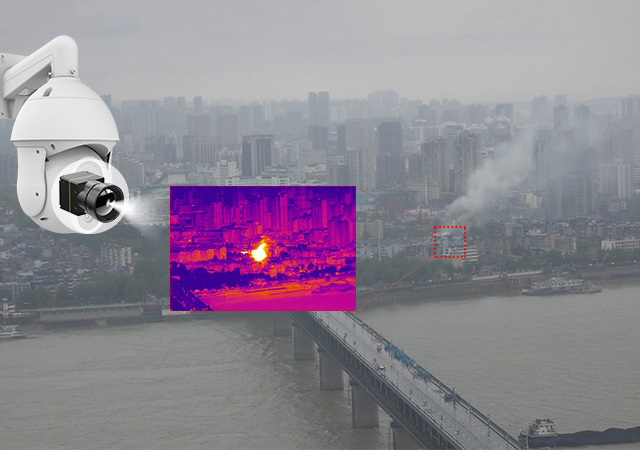A thermal imaging module is a key component in early fire detection systems. It helps in detecting and monitoring the occurrence and spread of fires by capturing and analyzing thermal radiation emitted by objects and environments.

Here’s how a thermal imaging module is applied in an early fire detection system:
Detection: the thermal imaging module constantly scans the monitored area for temperature variations. It can detect even small changes in temperature, which may indicate the presence of a fire.
Analysis: the module analyzes the thermal patterns and generates a thermal image or video feed. This image represents the heat distribution in the area and helps identify potential hotspots or fire sources.
Alarm System: when the thermal imaging module detects a significant temperature increase or abnormal thermal pattern, it triggers an alarm. This alarm can be integrated with other fire detection systems, such as smoke detectors or sprinklers, to initiate appropriate actions for fire suppression and evacuation.
Monitoring: the module continuously monitors the area for any changes in thermal signatures. It can track the spread of the fire and provide real-time information to emergency responders.
Benefits of using a thermal imaging module in an early fire detection system:
Early Detection: thermal imaging can detect fires at their early stages, allowing for faster response and minimizing potential damage.
Improved Accuracy: Thermal imaging modules can differentiate between different heat sources, reducing false alarms compared to traditional smoke detectors.
Increased Safety: by detecting fires before they escalate, early fire detection systems equipped with thermal imaging modules can help ensure the safety of occupants and facilitate faster evacuation.
Enhanced Visibility: in smoky or dark environments, thermal imaging can provide clear visibility of fire sources, helping firefighters locate and assess the situation more effectively.
In conclusion, thermal imaging modules play a crucial role in early fire detection systems by detecting temperature variations, analyzing thermal patterns, and triggering alarms. These systems help improve response time, minimize damage, and enhance overall safety during fire emergencies.
Go Top